Dog Harnesses: Everything You Need to Know
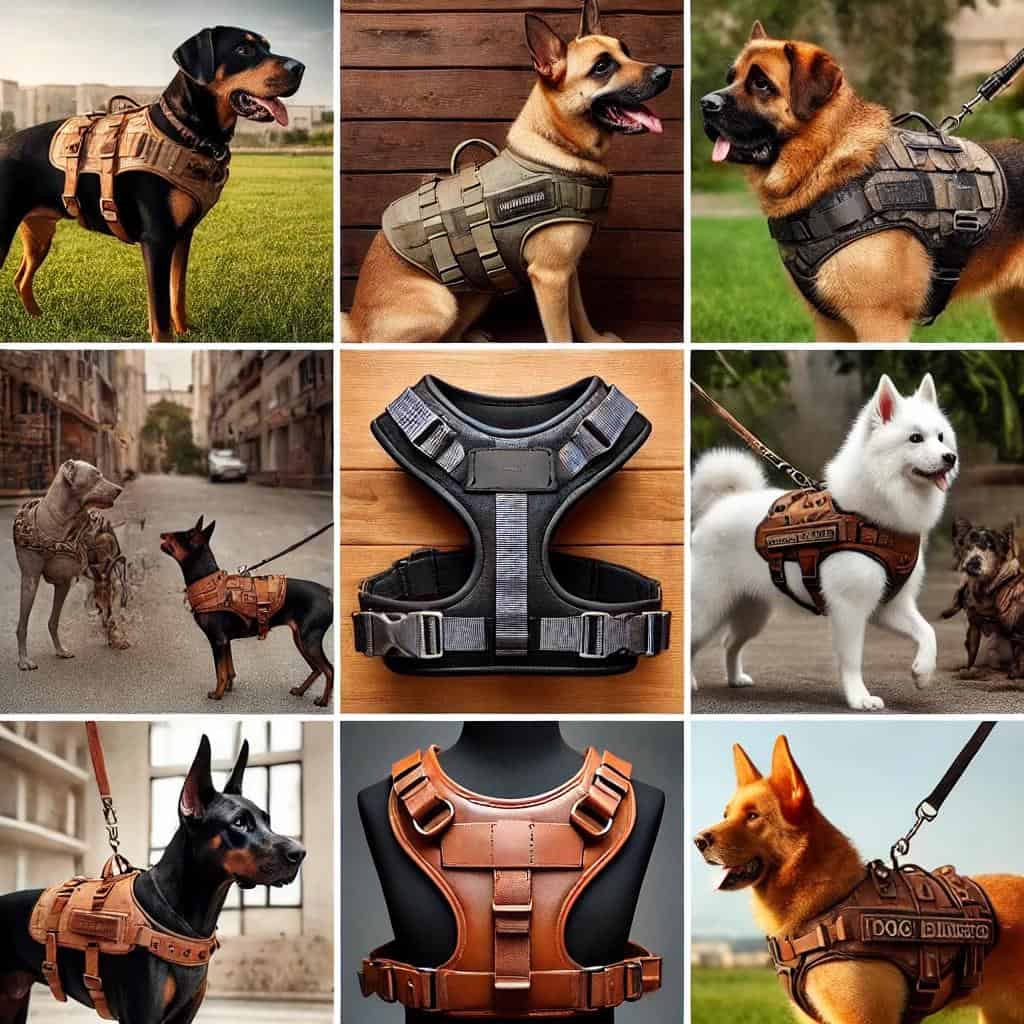
Dog harnesses are a fundamental tool in ensuring your dog’s safety, comfort, and control during walks, hikes, or training sessions. Whether you’re a first-time dog owner or someone looking to switch from collars to harnesses, this comprehensive guide will provide all the information you need to make the best choice for your pet. We’ll explore the many types of harnesses available, from those designed for small and big dogs to tactical and leather dog harnesses, and even the advantages of a dog harness with handle.
Table of Contents
- Introduction to Dog Harnesses
- Benefits of Using a Dog Harness Over a Collar
- Types of Dog Harnesses
- Standard Harness
- Dog Harness with Handle
- Small and Big Dog Harness
- Dog Harness for Small Dogs
- Tactical Dog Harness
- Leather Dog Harness
- How to Choose the Right Dog Harness
- Dog Harness with Handle: When and Why It’s Essential
- Small and Big Dog Harness: Tailored for Different Sizes
- Dog Harness for Small Dogs: Special Considerations
- Tactical Dog Harness: Features for Advanced Training
- Leather Dog Harness: Durability Meets Style
- Proper Fit and Sizing for Your Dog’s Harness
- How to Maintain Your Dog’s Harness
- Conclusion: A Well-Chosen Harness Is Key to Your Dog’s Comfort and Safety
1. Introduction to Dog Harnesses
A dog harness is a piece of equipment designed to go around a dog’s body, typically distributing pressure more evenly than a traditional collar. Harnesses are especially useful for dogs that pull on the leash, have respiratory issues, or require more control during walks. Whether you have a small dog or a large breed, a harness can be a game-changer in how you walk and manage your dog’s behavior.
Harnesses come in many forms, each suited for different breeds, sizes, and needs. From a simple dog harness with handle to a more sophisticated tactical dog harness, it’s important to choose a harness that’s appropriate for your dog’s specific requirements.
2. Benefits of Using a Dog Harness Over a Collar
While collars are still widely used, harnesses provide several advantages, particularly for dogs that pull or those prone to neck or trachea injuries. Here are some benefits of using a dog harness:
- Reduced Strain on the Neck: Traditional collars can put strain on a dog’s neck, especially if they pull on the leash. A harness distributes that pressure across the chest and back, which is much safer.
- Better Control: A harness provides more control over your dog’s movements. This is particularly beneficial for larger, stronger dogs.
- Prevents Choking: A collar, especially when used with a leash, can cause choking if the dog pulls too hard. A harness avoids this by redirecting the pressure.
- Ideal for Training: Harnesses make it easier to teach your dog not to pull on the leash. Certain harnesses even have front clips designed to discourage pulling.
- More Secure: Many dogs can slip out of collars, but a properly fitted harness is much harder to escape from.
3. Types of Dog Harnesses
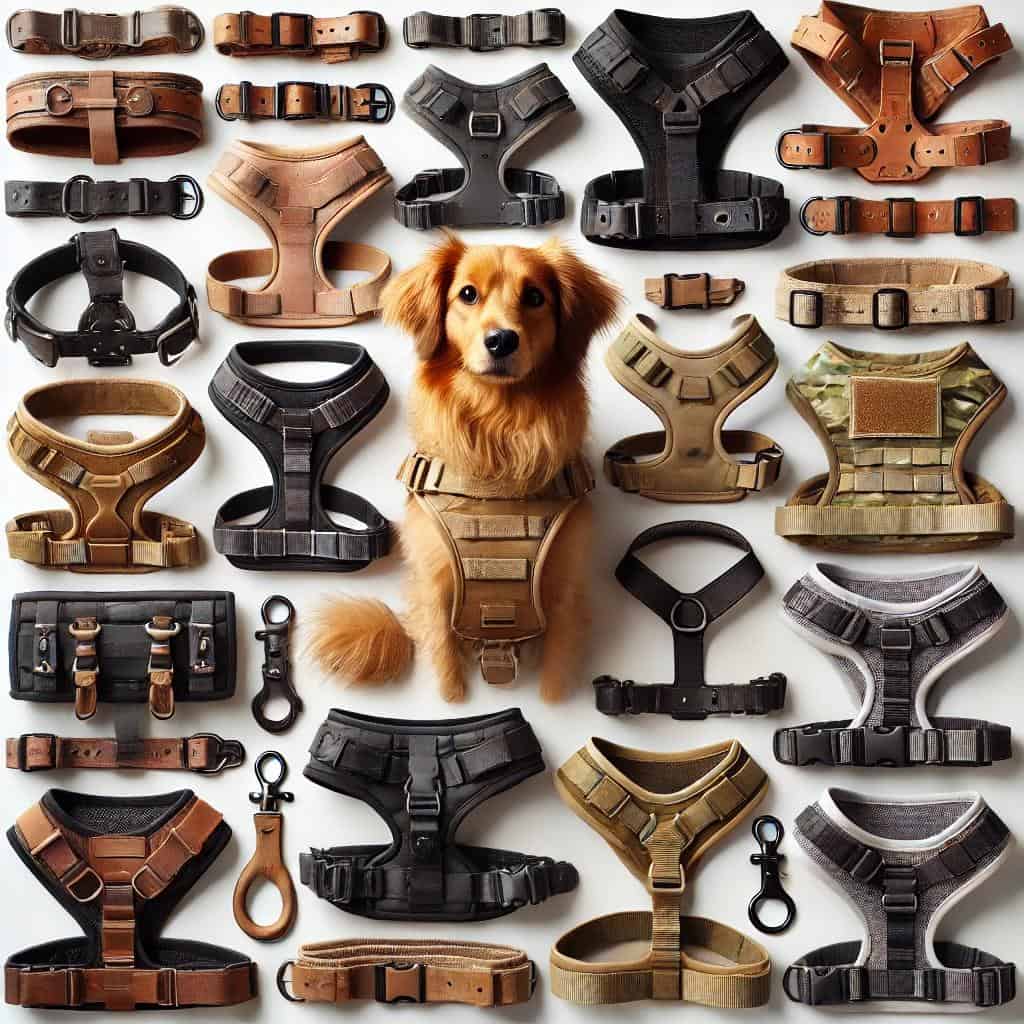
Dog harnesses are not one-size-fits-all. Different breeds and individual dogs have unique needs, which is why the market offers a variety of harness types. Below, we explore some of the most common types, each designed with a specific purpose in mind.
Standard Harness
The standard dog harness is designed for everyday walks. It features a basic strap system that wraps around the dog’s chest and back. These harnesses are usually made from nylon or polyester and are available in various colors and designs. While they offer more control than a collar, they don’t come with many additional features like handles or extra padding.
Dog Harness with Handle
A dog harness with handle is perfect for situations where you need immediate control over your dog. The handle on the top of the harness allows you to grab your dog quickly, whether you’re lifting them over an obstacle or preventing them from running into traffic. This type of harness is commonly used for large dogs or those that are part of search-and-rescue teams, as it gives the handler better leverage.
Small and Big Dog Harness
Dogs of different sizes require different types of harnesses. A small dog harness is typically designed with lighter materials and more delicate buckles to avoid overwhelming smaller breeds. In contrast, a big dog harness is made of sturdy materials, with reinforced stitching and thicker straps to withstand the strength of larger breeds. Choosing the correct harness size for your dog is crucial for both safety and comfort.
Dog Harness for Small Dogs
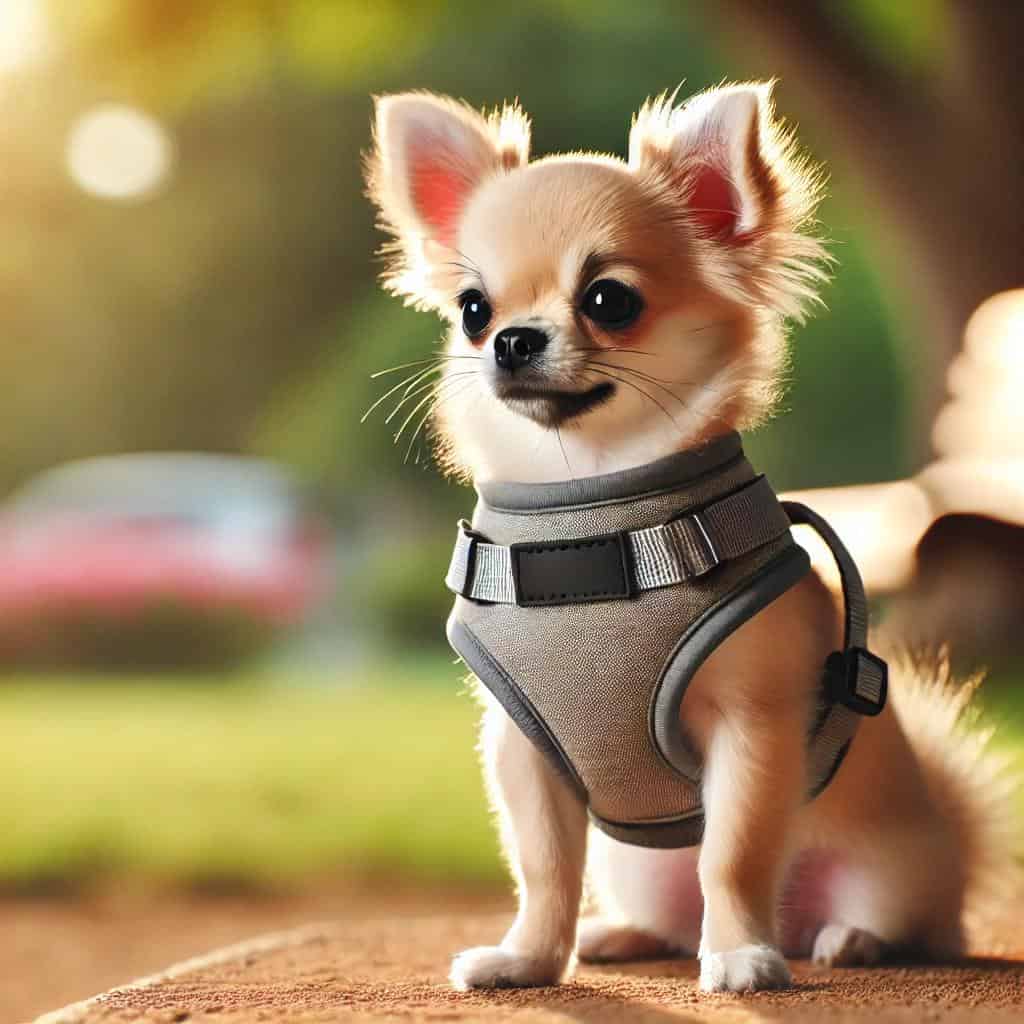
Small dogs often have delicate frames, making them more susceptible to injury if they wear an inappropriate harness. The best dog harness for small dogs is lightweight and has adjustable straps to ensure a snug fit without being too restrictive. Many harnesses for small dogs feature extra padding to make the harness as comfortable as possible, preventing chafing or rubbing.
Tactical Dog Harness
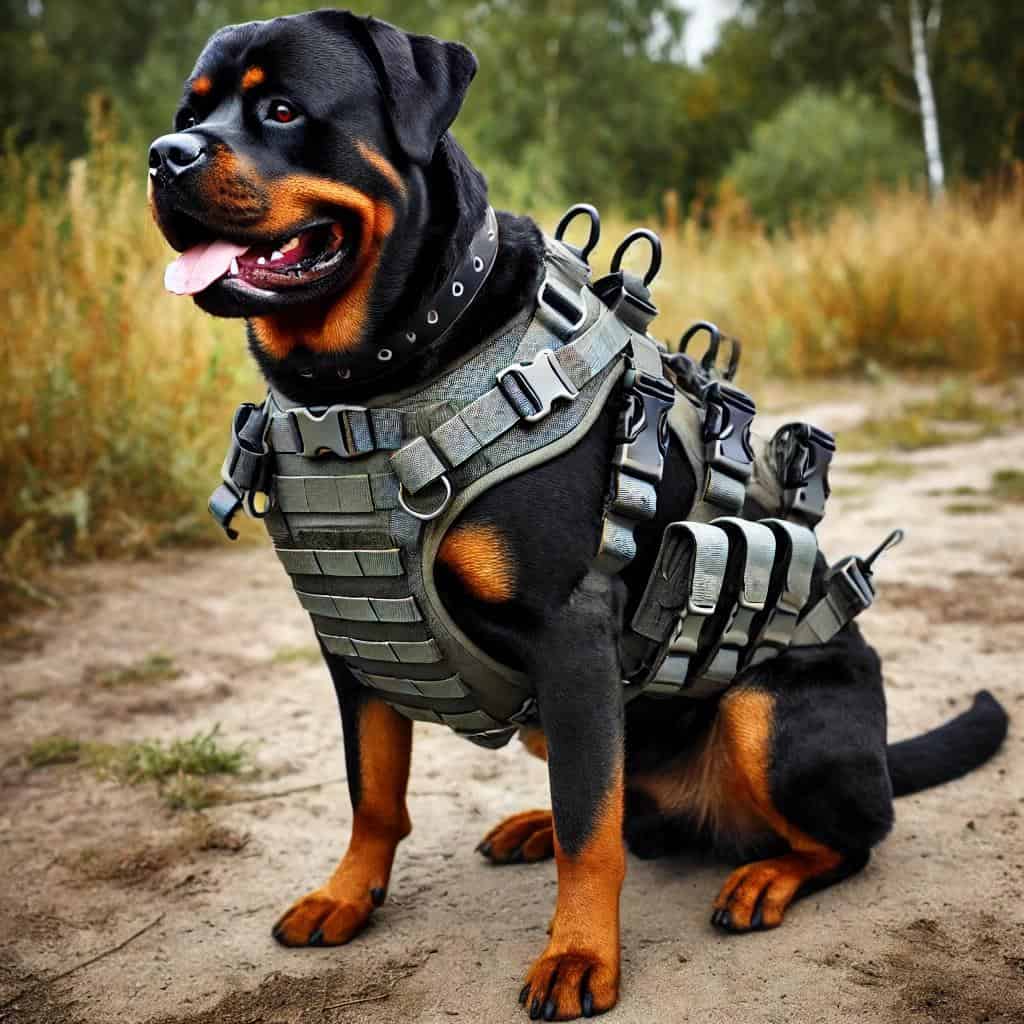
The tactical dog harness is designed for working dogs, such as those in military, police, or service roles. These harnesses are made from durable materials, often featuring MOLLE (Modular Lightweight Load-carrying Equipment) systems that allow the handler to attach additional gear. Tactical harnesses are built to provide more control, especially in high-stress environments, and often come with multiple leash attachment points.
Leather Dog Harness
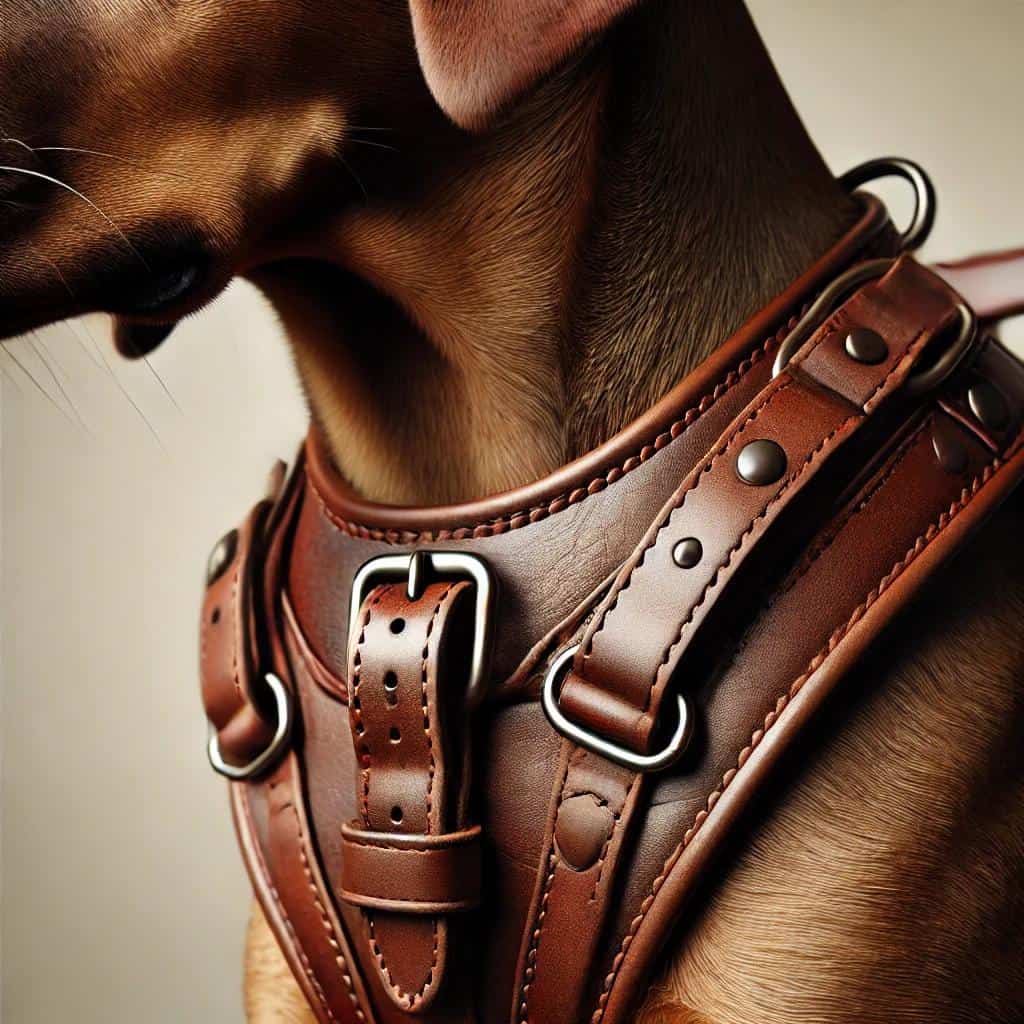
For dog owners who prefer a classic and stylish look, the leather dog harness is a great option. Leather harnesses are known for their durability and long-lasting quality. While they can be heavier than nylon harnesses, leather offers a timeless, premium look. A well-maintained leather dog harness can last for years, making it a worthwhile investment.
4. How to Choose the Right Dog Harness
Choosing the right harness for your dog involves several factors, including your dog’s size, breed, and behavior. Here are some tips to help you pick the perfect harness:
- Measure Your Dog: Always measure your dog’s chest and neck to ensure the harness will fit properly. Most harnesses come in sizes ranging from extra-small to extra-large, so knowing your dog’s dimensions is key.
- Consider Your Dog’s Needs: If your dog pulls on the leash, look for a harness with a front leash attachment point. If your dog needs extra control, consider a dog harness with handle.
- Material: Choose a harness made from durable yet comfortable materials. Nylon harnesses are lightweight and breathable, while leather dog harnesses offer more durability and style.
- Padding: Some harnesses come with extra padding for comfort. This is especially useful for dogs that are sensitive to rubbing or chafing.
- Adjustability: A good harness should have multiple adjustment points to ensure a perfect fit.
5. Dog Harness with Handle: When and Why It’s Essential
A dog harness with handle can be a lifesaver in certain situations. Whether you have a large, energetic dog or a small, nervous one, a harness with a handle allows you to quickly take control. These harnesses are ideal for:
- Lifting dogs over obstacles: If you’re hiking with your dog or navigating rough terrain, a handle allows you to lift them over rocks, logs, or streams easily.
- Providing extra control: If your dog is reactive or tends to pull toward other dogs, a harness with a handle allows you to take control swiftly and confidently.
- Senior or injured dogs: For dogs that need help standing up or walking, a handle allows you to support them gently without putting strain on their body.
6. Small and Big Dog Harness: Tailored for Different Sizes
Dogs come in all shapes and sizes, so their harnesses need to accommodate these differences. A small dog harness is typically more delicate and lightweight, as small dogs don’t require the same level of durability as larger breeds. On the other hand, a big dog harness is made from tougher materials and is designed to provide more control. Some key differences include:
- Strap width: Harnesses for large dogs tend to have wider straps to distribute pressure evenly and prevent the harness from digging into the dog’s skin.
- Buckle strength: Big dog harnesses have stronger buckles to withstand the pulling power of a large dog. Small dog harnesses, on the other hand, feature smaller buckles that won’t add extra weight.
- Padding: Larger dogs may need more padding to distribute weight and prevent rubbing, while small dogs might require lighter, softer materials.
7. Dog Harness for Small Dogs: Special Considerations
When choosing a dog harness for small dogs, there are several important considerations:
- Comfort: Since small dogs are more delicate, comfort should be your top priority. Look for harnesses with soft padding, breathable fabric, and lightweight design.
- Escape Prevention: Small dogs can be escape artists. Ensure the harness fits snugly around their body but isn’t too tight, so they can’t wiggle out of it.
- Style: Small dog harnesses often come in a variety of fun designs, making it easy to match your dog’s harness with their personality.
8. Tactical Dog Harness: Features for Advanced Training
Tactical dog harnesses are designed with functionality and control in mind. Here’s what else makes them stand out:
- MOLLE System: Many tactical harnesses come with MOLLE (Modular Lightweight Load-carrying Equipment) loops that allow you to attach pouches, water bottles, or other gear. This makes them versatile for working dogs who might need to carry supplies during training or rescue missions.
- Durability: These harnesses are typically made from high-quality, heavy-duty materials like nylon or polyester, with reinforced stitching to ensure they withstand the rigors of training and fieldwork.
- Extra Leash Attachments: Some tactical harnesses feature multiple leash attachment points, allowing for better control and the option to use dual leads or training leashes.
- Velcro Panels: Tactical harnesses often have Velcro panels for attaching patches or labels, such as the dog’s name, role (e.g., “Service Dog”), or even accessories like lights for nighttime visibility.
Tactical harnesses are perfect for advanced training and working dogs that need extra functionality. They provide handlers with control, utility, and durability that typical harnesses don’t offer.
9. Leather Dog Harness: Durability Meets Style
For those who prefer a classic and elegant look, leather dog harnesses offer both durability and style. Here are the key advantages:
- Durability: Leather harnesses, when properly cared for, can last for years. Their natural material is strong and can handle both small and large dogs.
- Style: Leather harnesses are often seen as premium products due to their timeless look. They can be more expensive than nylon or polyester options, but for many dog owners, the durability and style make them worth the investment.
- Comfort: Many leather harnesses are padded on the inside to prevent chafing, offering a blend of both strength and comfort.
Whether you’re taking your dog for a walk in the park or attending a special event, a leather harness is a stylish and durable choice.
10. Proper Fit and Sizing for Your Dog’s Harness
No matter what type of harness you choose, ensuring it fits your dog properly is crucial for both their safety and comfort. Here’s how to get the right fit:
- Measure Carefully: Always measure your dog’s chest and neck before purchasing a harness. Most brands offer a sizing guide to help you choose the correct size.
- Adjustability: Look for harnesses with multiple points of adjustment. A well-fitted harness should be snug but not too tight, and you should be able to fit two fingers between the harness and your dog’s body.
- Check for Chafing: After a walk, check your dog’s skin for any signs of chafing or irritation. If you notice any, consider a harness with more padding or adjust the fit.
11. How to Maintain Your Dog’s Harness
Maintaining your dog’s harness is important to ensure its longevity and hygiene. Here are some tips to keep it in good condition:
- Regular Cleaning: Wash your dog’s harness regularly, especially after hikes or muddy walks. Most fabric harnesses can be cleaned with soap and water, while leather harnesses may need a leather cleaner and conditioner.
- Inspect for Wear and Tear: Regularly check the buckles, straps, and stitching for any signs of wear. Replace the harness if you notice any damage that could compromise its safety.
- Store Properly: When not in use, store your harness in a cool, dry place to prevent it from getting damaged by moisture or sunlight.
12. Conclusion: A Well-Chosen Harness Is Key to Your Dog’s Comfort and Safety
Choosing the right harness for your dog is essential for ensuring their comfort, safety, and control during walks, training, or other activities. Whether you opt for a standard harness, a dog harness with a handle, a tactical harness, or a leather dog harness, the key is to find one that fits your dog’s unique needs. With the right harness, you can make every walk an enjoyable and safe experience for both you and your furry friend.
External Resources:
PetMD – Dog Harness Types – Learn about different types of dog harnesses and their uses.
American Kennel Club – Harnesses vs. Collars – A guide on choosing between a harness and a collar for your dog.
The Spruce Pets – Best Dog Harnesses – Recommendations for the best dog harnesses available on the market.
DogTime – Choosing a Dog Harness – Tips for selecting the right harness for your dog.
Related Posts:
The Ultimate Guide in 2024 to Gun Dog Training: Skills, Supplies, and Tips for Success
Master the art of training your gun dog with essential skills and expert tips tailored for success in the field.
Learn More
Bubble Theory Dog Training: A New Approach
Explore innovative training techniques with the Bubble Theory, designed to improve communication with your dog.
Learn More
Effective Training Dog Collars for Obedient Pets in 2024
Discover the best training collars available this year to help you achieve a well-behaved and obedient pet.
Learn More
The Ultimate Guide to Dog Toilet Training Grass: Everything You Need to Know
Learn how to effectively use dog toilet training grass for a hassle-free potty training experience.
Learn More
The Ultimate Guide to Dog Backpacks: Practical and Fun Solutions for Adventurous Dogs
Equip your dog for adventures with the best dog backpacks designed for comfort and utility.
Learn More
The Ultimate Guide to Dog Collars: Everything You Need to Know
Find the perfect collar for your dog with insights on styles, materials, and sizing.
Learn More
The Ultimate Guide to Dog Fences: Everything You Need to Know
Discover your options for dog fencing to keep your furry friend safe and secure at home.
Learn More
Thank you for reading Dog Harnesses, What do you love most about these companions?
Share your thoughts in the comments below! If you enjoyed this post, consider subscribing to our newsletter for more pet tips, stories and blogs!
